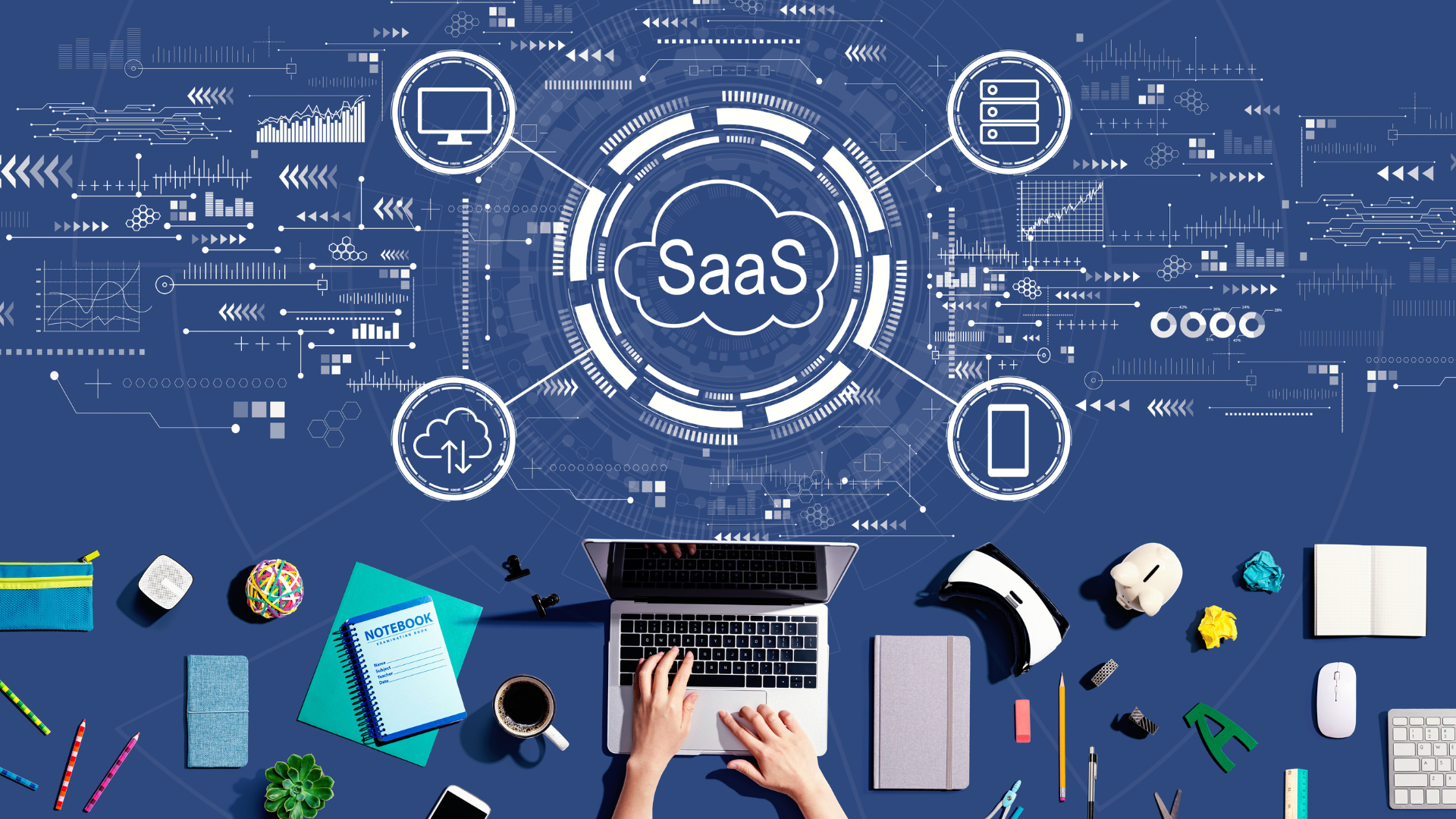In today’s digital landscape, security breaches can destroy even the most promising ventures overnight. For entrepreneurs learning how to start saas business operations, understanding security fundamentals isn’t optional; it’s the foundation that determines whether your venture survives its first year. A single data breach can cost millions in damages, destroy customer trust, and eliminate years of hard work in building your reputation.
The Software-as-a-Service model creates unique security challenges that differ significantly from traditional software deployment. Your SaaS business handles sensitive customer data, processes financial transactions, and operates across multiple environments simultaneously. These factors create attack surfaces that cybercriminals actively exploit, making robust security practices essential for sustainable growth and customer retention.
Many founders focus heavily on product development and customer acquisition while treating security as an afterthought. This approach proves costly when regulatory fines, legal liabilities, and reputation damage far exceed the investment required for proper security implementation. Smart entrepreneurs integrate security considerations into every business decision from day one, creating competitive advantages through enhanced customer trust and regulatory compliance.

1. Implement Multi-Factor Authentication Across All Systems
Multi-factor authentication (MFA) represents the most effective defense against unauthorized access to your systems and customer data. This security layer requires users to provide multiple verification forms before gaining access, significantly reducing the risk of compromised accounts even when passwords are stolen.
For saas businesses for startups, implementing MFA across all administrative accounts, customer accounts, and third-party integrations creates comprehensive protection against credential-based attacks. The additional security layer protects against phishing attempts, password reuse vulnerabilities, and brute force attacks that target weak authentication systems.
The challenge lies in balancing security requirements with user experience expectations. Customers may resist additional authentication steps that slow down their workflow, potentially affecting adoption rates and user satisfaction. However, the security benefits far outweigh convenience concerns, especially when breaches can destroy customer relationships permanently.
Implementation considerations: Choose MFA solutions that support multiple authentication methods, including SMS, authenticator apps, and hardware tokens. Provide clear user education about security benefits and ensure backup recovery options exist for users who lose access to their authentication devices.
2. Establish Comprehensive Data Encryption Standards
Data encryption protects sensitive information both in transit and at rest, ensuring that intercepted data remains useless to unauthorized parties. Your encryption strategy should cover customer data, payment information, internal communications, and backup systems using industry-standard encryption protocols.
The best saas tools for business operations require robust encryption capabilities that protect data throughout its lifecycle. This includes encrypted database storage, secure API communications, and encrypted backup systems that maintain protection even during disaster recovery scenarios.
The complexity of managing encryption keys and certificates creates operational challenges that many small teams struggle to handle effectively. Poor key management can lock you out of your data or create vulnerabilities that negate encryption benefits. Professional key management systems and regular security audits help maintain encryption effectiveness.
Technical requirements: Implement AES-256 encryption for data at rest, TLS 1.3 for data in transit, and establish secure key rotation policies. Regular penetration testing ensures encryption implementations remain effective against evolving attack methods.
3. Develop Robust Access Control and Permission Management
Proper access control ensures that users and systems can only access resources necessary for their specific roles and responsibilities. This principle of least privilege minimizes damage potential when accounts are compromised and reduces insider threat risks from malicious or careless employees.
Saas business growth strategies must include scalable access management systems that maintain security as teams expand and customer bases grow. Role-based access control (RBAC) systems provide structured approaches to managing permissions while audit trails document access patterns and identify potential security issues.
Managing access permissions becomes increasingly complex as organizations grow and integrate multiple systems. Employees changing roles, contractors with temporary access needs, and integration requirements create permission sprawl that opens security vulnerabilities. Regular access reviews and automated deprovisioning help maintain control as complexity increases.
Best practices: Implement role-based access control with regular permission audits, establish clear processes for granting and revoking access, and maintain detailed logs of all access attempts and permission changes.
4. Create Comprehensive Backup and Disaster Recovery Plans
Data loss events can destroy a SaaS business regardless of their cause, whether from cyberattacks, natural disasters, hardware failures, or human error. For any SaaS business, comprehensive backup strategies are critical to ensuring continuity and avoiding service disruptions that damage reputation and customer trust.
A successful SaaS business must implement disaster recovery plans that minimize downtime and data loss during crises. These plans should address multiple failure scenarios—such as partial data corruption, complete system failures, and ransomware attacks that encrypt production environments.
For SaaS business operations that depend heavily on automation tools and sensitive customer data, regular data backups are non-negotiable. The geographic distribution of backups adds a layer of protection, especially for a growing SaaS business facing region-specific risks. Most importantly, periodic testing ensures your SaaS business can recover quickly and completely when systems fail.
The challenge lies in balancing backup frequency with system performance and storage costs. Frequent backups provide better recovery options but consume resources and may impact application performance. Additionally, backup systems themselves become targets for attackers seeking to destroy recovery capabilities during ransomware attacks.
Recovery planning: Establish Recovery Time Objectives (RTO) and Recovery Point Objectives (RPO) that align with business requirements, test recovery procedures regularly, and maintain offline backup copies that ransomware cannot reach.
5. Implement Continuous Security Monitoring and Alerting
Proactive monitoring systems detect security threats and anomalous behavior before they escalate into major incidents. Real-time alerting enables rapid response to potential breaches while detailed logging provides forensic capabilities for incident investigation and compliance requirements.
Successful saas business case studies consistently highlight the importance of early threat detection in minimizing breach impacts. Automated monitoring systems can identify unusual login patterns, suspicious API usage, and potential data exfiltration attempts that human administrators might miss during normal operations.
The volume of security alerts can overwhelm small teams, leading to alert fatigue where important warnings get ignored among false positives. Properly tuned monitoring systems require ongoing adjustment to maintain effectiveness while minimizing noise that reduces response effectiveness.
Monitoring focus areas: Track failed login attempts, unusual data access patterns, API usage anomalies, system performance changes, and network traffic irregularities that may indicate security incidents.
6. Establish Secure Software Development Practices
Security vulnerabilities often originate in application code, making secure development practices essential for protecting customer data and maintaining system integrity—especially in a SaaS business. Security-focused development methodologies help SaaS business teams identify and eliminate risks before they reach production environments.
For those exploring SaaS business ideas for beginners, it’s crucial to incorporate security testing throughout the development lifecycle, not just as a final checkpoint. Techniques like static code analysis, dynamic testing, and dependency scanning are foundational for any SaaS business that aims to scale securely.
Development teams within a SaaS business may sometimes resist security protocols that seem to delay feature delivery or add extra steps. However, balancing security with speed requires a cultural shift and smart tool integration. This ensures the SaaS business maintains security without sacrificing agility or innovation.
Development security practices: Implement secure coding standards, conduct regular code reviews with a security focus, use automated vulnerability scanning tools, and maintain updated dependencies to prevent known security issues.
7. Maintain Compliance with Industry Regulations
Regulatory compliance protects both your business and your customers while demonstrating a commitment to data protection standards. Different industries and geographic regions impose specific requirements that SaaS providers must understand and implement correctly.
How to scale a saas business successfully requires understanding compliance requirements in target markets, as violations can result in significant fines, legal liability, and market access restrictions. Common regulations include GDPR for European customers, HIPAA for healthcare data, and SOC 2 for general data security practices.
Compliance requirements change regularly and vary significantly between jurisdictions, creating ongoing obligations that require dedicated resources and expertise. The cost of compliance can be substantial for small companies, but the cost of violations typically far exceeds implementation expenses.
Compliance considerations: Identify applicable regulations for your target markets, implement necessary controls and documentation, conduct regular compliance audits, and maintain current knowledge of regulatory changes.
8. Provide Comprehensive Security Training for All Team Members
Human error causes many security incidents, making employee training essential for maintaining effective security postures. Regular training programs ensure team members understand security policies, recognize threats, and respond appropriately to potential incidents.
Saas business marketing tips should include security awareness as a competitive differentiator, as customers increasingly evaluate vendor security practices when making purchasing decisions. Well-trained teams provide better customer support and make fewer mistakes that could compromise security.
Training programs require ongoing investment and regular updates to address evolving threats and new team members. Generic training often fails to address specific risks that SaaS companies face, requiring customized programs that reflect actual business operations and threat landscapes.
Training components: Cover phishing recognition, password security, social engineering tactics, incident reporting procedures, and role-specific security responsibilities that align with job functions.
9. Conduct Regular Security Assessments and Penetration Testing
Regular security assessments identify vulnerabilities and validate control effectiveness before attackers can exploit weaknesses. Professional penetration testing provides objective evaluations of security postures from an attacker’s perspective.
Profitable saas business models must account for ongoing security assessment costs as essential operational expenses rather than optional activities. These assessments often reveal gaps between security policies and actual implementation that could lead to successful attacks.
The challenge lies in finding qualified security professionals and balancing assessment frequency with operational demands and costs. Assessment results often identify numerous issues that require prioritization and resource allocation to address effectively.
Assessment approach: Conduct quarterly vulnerability scans, annual penetration tests, and ongoing security reviews of new features or system changes. Maintain relationships with qualified security professionals who understand SaaS-specific risks.
Addressing Security Challenges and Consequences
Resource Constraints and Budget Limitations
Low-budget saas business ideas often struggle with security implementation costs, but inadequate security creates far greater financial risks through potential breaches, regulatory fines, and customer churn. Smart resource allocation focuses on high-impact security practices that provide maximum protection per dollar invested.
The temptation to defer security investments until revenue grows can prove catastrophic if breaches occur during vulnerable early stages. Customers and investors increasingly evaluate security practices when making decisions, making security investments essential for fundraising and customer acquisition success.
Building security costs into pricing models from the beginning ensures adequate resources for proper implementation while maintaining profitability. Underpricing services while cutting security corners creates unsustainable business models that eventually fail through security incidents or inability to meet customer expectations.
Scalability and Growth Management
Saas business vs traditional business models create unique scaling challenges where security systems must grow seamlessly with customer bases and feature sets. Manual security processes that work for small teams become bottlenecks that slow growth and increase vulnerability as operations expand.
Automated security tools and processes become essential for maintaining security effectiveness during rapid growth periods. However, automation requires upfront investment and ongoing management that strains resources during critical growth phases when every dollar counts toward customer acquisition and product development.
Planning security architecture for future scale prevents costly retrofitting and security gaps that emerge when systems outgrow their original security designs. Scalable security solutions cost more initially but provide better long-term value through reduced operational overhead and consistent protection levels.
Customer Trust and Market Positioning
Security practices directly impact customer acquisition and retention in competitive SaaS markets where alternatives exist for most services. Customers increasingly evaluate vendor security capabilities when making purchasing decisions, making security a competitive differentiator rather than just a protective measure.
Security incidents can destroy years of reputation-building overnight, making prevention far more cost-effective than incident response and recovery efforts. The reputational damage from breaches often exceeds direct financial costs and affects future growth potential through reduced customer trust and market confidence.
For saas business for small companies, security investments demonstrate professionalism and commitment to customer protection that larger competitors may take for granted. Transparent communication about security practices builds trust and can become a key selling point against competitors with weaker security positions.
Building a Security-First Culture
Leadership Commitment and Resource Allocation
Effective security programs require leadership commitment that goes beyond policy statements to include adequate resource allocation and ongoing support for security initiatives. Leaders who understand security as a business enabler rather than a cost center make better decisions about security investments and priorities.
Security responsibilities must be clearly defined and integrated into job descriptions and performance evaluations rather than treated as additional duties that compete with primary responsibilities. This integration ensures security receives appropriate attention and resources throughout the organization.
Regular communication about security goals, achievements, and challenges keeps security visible and relevant to all team members while demonstrating leadership commitment to maintaining strong security postures.
Continuous Improvement and Adaptation
Security threats evolve continuously, requiring adaptive approaches that evolve with changing risk landscapes and business requirements. Regular reviews of security practices ensure they remain effective against current threats while supporting business growth and operational efficiency.
Incident response experiences provide valuable learning opportunities that improve future security practices and response capabilities. Post-incident reviews should focus on systemic improvements rather than individual blame to encourage honest reporting and continuous improvement.
Industry participation through security forums, conferences, and peer networks provides insights into emerging threats and best practices that individual companies might miss through isolated approaches to security management.
FAQ Section
Q: What are the most critical security practices for a new SaaS startup? A: Start with multi-factor authentication, data encryption, and secure development practices. These foundational elements protect against the most common attack vectors while being relatively affordable to implement. As you grow, add comprehensive monitoring, regular security assessments, and formal compliance programs.
Q: How much should a SaaS business budget for security annually? A: Allocate 3-10% of revenue for security, depending on your industry and risk profile. Early-stage companies should invest at least $10,000-50,000 annually in basic security tools and practices. Healthcare, financial, and enterprise-focused SaaS companies typically require higher security budgets due to regulatory requirements and customer expectations.
Q: Can small SaaS teams handle security internally, or should they outsource? A: Small teams can handle basic security practices, but should outsource specialized functions like penetration testing, compliance audits, and incident response planning. Consider managed security services for 24/7 monitoring and threat detection that small teams cannot provide cost-effectively.
Q: How do security requirements differ between B2B and B2C SaaS businesses? A: B2B SaaS typically faces stricter security requirements due to enterprise customer expectations, compliance mandates, and handling of business-critical data. B2C SaaS focuses more on privacy protection and consumer data regulations. Both require strong foundational security, but B2B often needs additional enterprise-grade features and certifications.
Q: What are the consequences of a security breach for a SaaS business? A: Consequences include direct costs (incident response, legal fees, regulatory fines), customer churn, reputational damage, and potential business closure in severe cases. Average breach costs range from hundreds of thousands to millions of dollars, with small businesses often unable to survive major incidents. Prevention costs significantly less than breach recovery.







